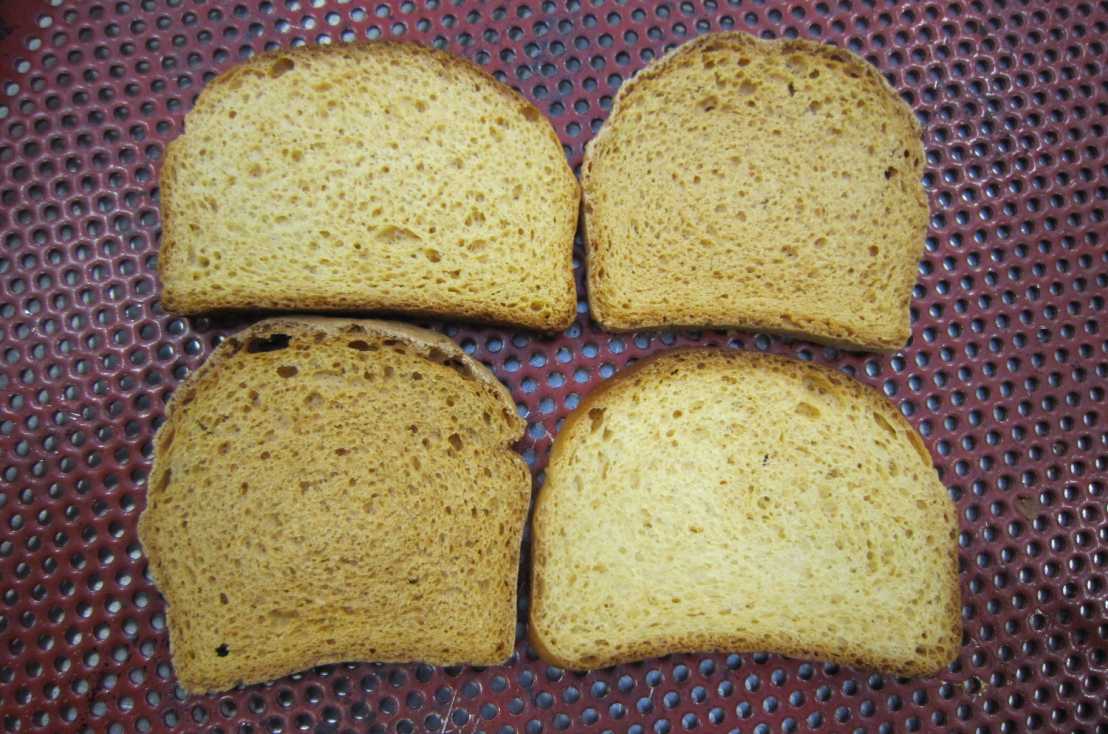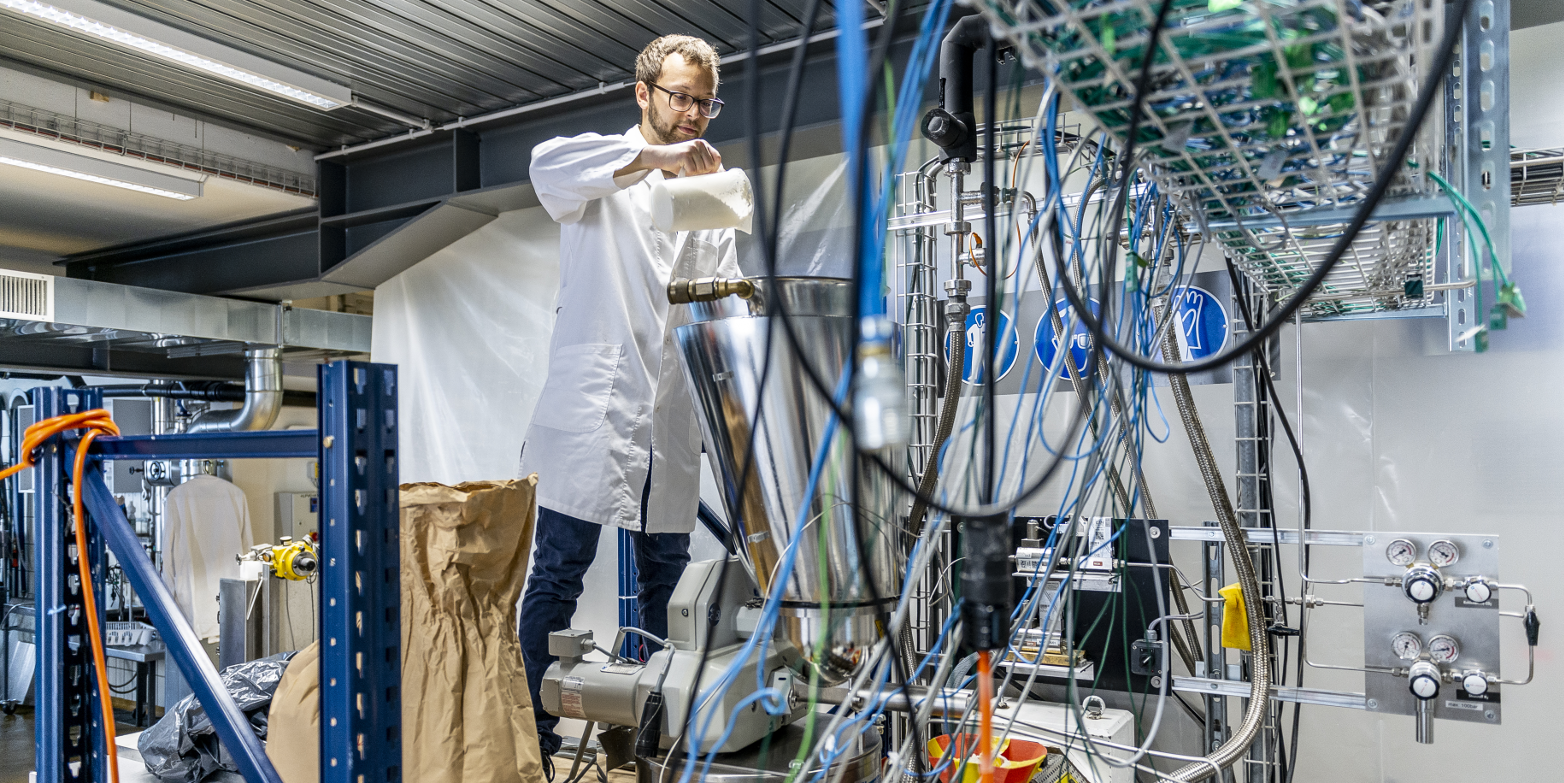Partnership to produce the perfect rusk
The company Roland were unhappy with the quality of their gluten-free rusks. Fortunately Erich Windhab, a professor at ETH, was on hand to help.
Process engineering is the name of the game at Erich Windhab’s laboratory. “We have everything we need to build prototypes,” says Windhab, Professor of Food Process Engineering at ETH. With its fully equipped mechanical and electronic workshops, the laboratory is the ideal place for engineers and technicians to work on innovative solutions for the food industry. “We carry out two-thirds of our projects in close collaboration with industry,” says Windhab, “and around half of those projects are with SMEs.”
Working groups for industry partnerships
Windhab joined ETH in 1992 and soon established a series of working groups to focus on specific sectors such as industrial chocolate, confectionery and frozen dessert manufacturers. This organisational structure is still very much in evidence today. Twice a year, Windhab invites industry representatives to ETH to show them the groups’ latest innovations and discuss the most pressing issues the companies are keen to tackle. “Those meetings have led to dozens of project partnerships that have so far attracted 25 million francs of research funding, allowing us to bring on board 20 doctoral candidates and giving rise to 20 patents,” says Windhab.
Windhab’s collaboration with Swiss businessman and master baker Marc-André Cornu stemmed directly from one of these working groups. After a meeting in 2013, Cornu invited Windhab to his factory. Cornu SA, the family business in Champagne, Vaud, had acquired Murten-based Roland in 2008, a well-known producer of crispbread, rusks, breadsticks and pretzels. At the time, Roland were working on the market launch of gluten-free crispbread in order to meet demand from the rising number of people with gluten intolerance. But Cornu wasn’t satisfied with the quality of the new products, which is why Windhab’s research into microfoams captured his attention.
An in-depth look at dough
As part of a project sponsored jointly by the Swiss National Science Foundation (SNSF) and the EU, Windhab’s group were exploring the possibility of aerating and extruding highly viscous doughs. Extruders force viscous substances through a shaping die under pressure and in a continuous stream. Windhab’s team developed just such an extruder for experiments with aerated doughs. Using synchrotron x-ray tomography at the Paul Scherrer Institute (PSI) in Villigen, the team examined the structural behaviour of highly viscous, elastic microfoams containing air bubbles measuring between 5 and 100 micrometres.
“To make a project of this kind successful, you need an iron will, a common goal and a good relationship with your partners.”Marc-André Cornu, business owner
Cornu immediately recognised that this basic research into dough offered the potential to optimise his gluten-free products. Gluten is a long-chain protein that can be shaped into elastic strands under mechanical pressure, for example through mixing or kneading. When the dough is baked, these strands ensure that the expanding vapour bubbles inside retain a relatively intact porous structure, thus enabling the bread to rise properly.
If there is no gluten in the dough, the bubbles burst sooner, leading to significantly reduced expansion. The finished product is nowhere near as voluminous as it should be and its irregular porosity makes for a hard texture. Previously, this problem was partially alleviated by adding emulsifiers and polysaccharides (thickening agents) to the dough – but this came at the expense of natural, healthy nutrition, as well as diminishing the flavour of the finished product. Windhab’s research offered a possible way out of this dilemma. Working hand in hand with Cornu, the researchers came up with the idea of aerating the gluten-free dough using Windhab’s extruder in order to deliver most of the desired foam structure and volume to the rusks before baking. The subsequent baking process would then serve merely to lend the foam the required firmness and to extract moisture.
Quick decision-making
“Cornu is an unconventional businessman,” says Windhab. “If, after careful examination, he likes an idea, he simply says: ‘Let’s do it!’” From the researcher’s point of view, this is the key difference between partnerships with SMEs and those with large corporations: “The latter generally offer much greater scalability for jointly developed technologies. But the decision-making processes are far quicker in SMEs.”
Windhab and Cornu launched a project entitled TopGlu0 and submitted it to the Swiss Innovation Agency (Innosuisse) in the hope of receiving funding. The Swiss government approved funding for a three-year research partnership, enabling Windhab’s group to build the first pilot extruder in 2013. The extruder initially had a production volume of up to 50 kilogrammes of micro-aerated dough per hour, but was subsequently scaled up. For the shift to large-scale production, Windhab got Bühler – a Swiss mechanical engineering company – on board.
Windhab convinced Bühler’s management team that the planned extruder had a future in the food technology industry – one that went well beyond Roland. If they succeeded in producing gluten-free rusks for Roland using aerated, highly viscous doughs, there would be nothing to stop them launching the process in the market for fresh-baked goods and other foodstuffs. “Innovations usually have far-reaching consequences,” says Windhab. He argued that the new extrusion process could, in the future, be coupled with other novel baking processes currently being tested at ETH. “That could reduce baking times more than fivefold,” he said, emphasising the potential benefits of shorter baking lines, reduced power consumption and lower costs.
Bühler were impressed. In 2016, the three partners launched Glu-0-Z-Tec, another Innosuisse project, which was funded by the Swiss government to the tune of some half a million francs. Bühler initially provided a standard pasta extruder, which Windhab’s technicians adapted – and successfully tested – for the production of microfoams. The process has now reached throughput rates of 300 kilogrammes of dough per hour, and the production facility is set to come on stream in the Roland factory in spring 2019.
Radical innovations take time

By then, eight years will have passed since the researchers first came up with the idea in the lab. “That’s a fairly short time span for such a radical innovation,” says Windhab. For businessman Cornu, on the other hand, the duration of the project was the biggest challenge, because the market is constantly changing. “I was worried that in six years’ time there might no longer be a market for the product we originally wanted to develop.”
In this case, however, luck was on the project partners’ side. The market forecasts for gluten-free products still point to strong growth. As Windhab explains, the problem of differing time scales is, to a certain extent, par for the course in academic-industry partnerships that involve radical innovation. Even if both sides clearly define their mutual expectations and have a specified project structure and concrete milestones right from the start, “we repeatedly reach points in the development process where we have to scrap our original plans and move in a new direction. And that’s time-consuming.”
However, particularly in times of uncertainty – which Windhab calls flatliner phases – it quickly becomes clear whether the partners have a sound basis for trust and whether the chemistry between them is right. “At times like that you just have to meet up for a beer and thrash out the problems.” Cornu has a similar take: “To make a project of this kind successful, you need an iron will, a common goal and, most importantly, a good relationship with your partners.”

